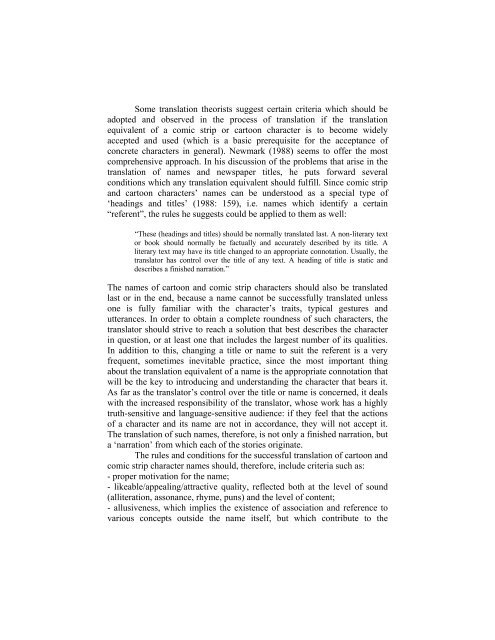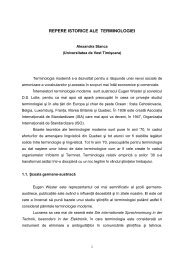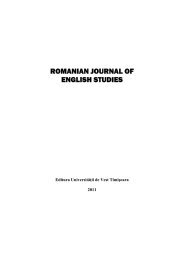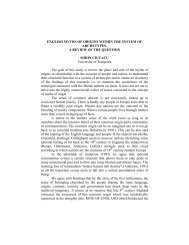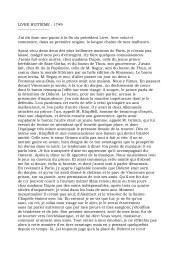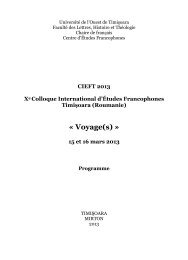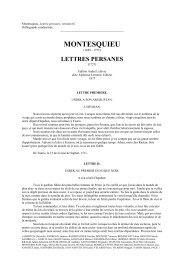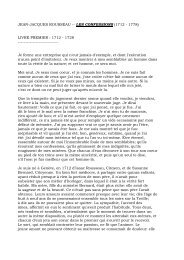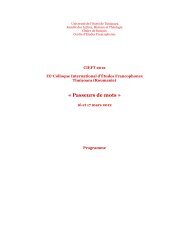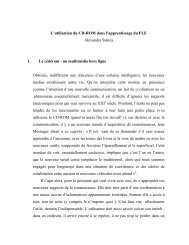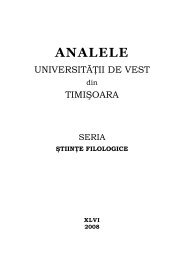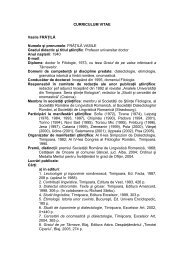TRANSLATION AND MEANING: A CULTURAL- COGNITIVE ...
TRANSLATION AND MEANING: A CULTURAL- COGNITIVE ...
TRANSLATION AND MEANING: A CULTURAL- COGNITIVE ...
Create successful ePaper yourself
Turn your PDF publications into a flip-book with our unique Google optimized e-Paper software.
Some translation theorists suggest certain criteria which should be<br />
adopted and observed in the process of translation if the translation<br />
equivalent of a comic strip or cartoon character is to become widely<br />
accepted and used (which is a basic prerequisite for the acceptance of<br />
concrete characters in general). Newmark (1988) seems to offer the most<br />
comprehensive approach. In his discussion of the problems that arise in the<br />
translation of names and newspaper titles, he puts forward several<br />
conditions which any translation equivalent should fulfill. Since comic strip<br />
and cartoon characters’ names can be understood as a special type of<br />
‘headings and titles’ (1988: 159), i.e. names which identify a certain<br />
“referent”, the rules he suggests could be applied to them as well:<br />
“These (headings and titles) should be normally translated last. A non-literary text<br />
or book should normally be factually and accurately described by its title. A<br />
literary text may have its title changed to an appropriate connotation. Usually, the<br />
translator has control over the title of any text. A heading of title is static and<br />
describes a finished narration.”<br />
The names of cartoon and comic strip characters should also be translated<br />
last or in the end, because a name cannot be successfully translated unless<br />
one is fully familiar with the character’s traits, typical gestures and<br />
utterances. In order to obtain a complete roundness of such characters, the<br />
translator should strive to reach a solution that best describes the character<br />
in question, or at least one that includes the largest number of its qualities.<br />
In addition to this, changing a title or name to suit the referent is a very<br />
frequent, sometimes inevitable practice, since the most important thing<br />
about the translation equivalent of a name is the appropriate connotation that<br />
will be the key to introducing and understanding the character that bears it.<br />
As far as the translator’s control over the title or name is concerned, it deals<br />
with the increased responsibility of the translator, whose work has a highly<br />
truth-sensitive and language-sensitive audience: if they feel that the actions<br />
of a character and its name are not in accordance, they will not accept it.<br />
The translation of such names, therefore, is not only a finished narration, but<br />
a ‘narration’ from which each of the stories originate.<br />
The rules and conditions for the successful translation of cartoon and<br />
comic strip character names should, therefore, include criteria such as:<br />
- proper motivation for the name;<br />
- likeable/appealing/attractive quality, reflected both at the level of sound<br />
(alliteration, assonance, rhyme, puns) and the level of content;<br />
- allusiveness, which implies the existence of association and reference to<br />
various concepts outside the name itself, but which contribute to the


